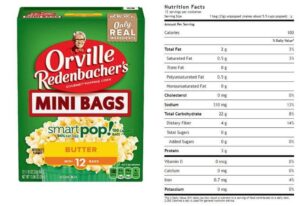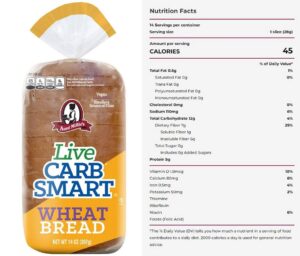6 min read, 1132 words
GLP-1 Medications: The Science Behind the Weight Loss Revolution
A no-nonsense guide to understanding how these medications actually work and how to use them strategically
What Are GLP-1 Medications, Really?
GLP-1 (Glucagon-Like Peptide-1) medications are synthetic versions of a hormone your gut naturally produces when you eat. Think of GLP-1 as your body’s internal “that’s enough” signal – it tells your brain you’re full, slows down how fast food leaves your stomach, and helps regulate blood sugar.
The medications (semaglutide/Wegovy, tirzepatide/Zepbound) are FDA-approved specifically for weight management and essentially amplify this natural satiety signal. Instead of your gut whispering “maybe we’re good,” these drugs make it shout “STOP EATING” from the rooftops.
How they work:
- Appetite suppression: Direct action on brain receptors that control hunger
- Gastric emptying: Food sits in your stomach longer, keeping you full
- Blood sugar regulation: Better insulin sensitivity and glucose control
- Food noise reduction: That constant mental chatter about food gets dialed way down
The Science vs. The Hype
The hype says: “Take this shot, lose weight effortlessly!”
The science says: GLP-1s are powerful appetite regulators that can create the caloric deficit needed for weight loss, but they’re tools, not magic bullets.
Here’s what the research actually shows:
- Average 15-20% body weight loss in clinical trials (genuinely impressive!)
- BUT participants also received comprehensive lifestyle counseling
- AND about 25-40% of weight lost can be lean mass if you’re not strategic about it
- PLUS weight regain is common when discontinued without habit changes
The studies don’t show people just taking shots and calling it a day. The successful participants were doing the work – they just had pharmaceutical help managing their appetite while they did the work.
Reality check: These medications don’t teach you how to eat or move better. They just make it easier to eat less while you figure that part out. Miss that memo, and you’re setting yourself up for disappointment.
Nutrition Strategy Integration: Making Every Bite Count
This is where it gets interesting. GLP-1s essentially force what good nutrition coaching tries to achieve naturally – appetite regulation and portion control. But here’s the kicker: when someone’s genuinely satisfied eating 800-1200 calories per day, every single bite needs to be strategic.
The Protein Priority Becomes CRITICAL
I’m talking 1.2-1.6g protein per kg of goal body weight minimum, or you’re watching muscle mass disappear along with fat. When your appetite is suppressed, protein can’t be an afterthought – it needs to be the star of every meal.
Why protein becomes non-negotiable:
- Preserves lean mass during rapid weight loss
- Highest thermic effect of food (burns calories just digesting it)
- Maximizes satiety per calorie consumed
- Supports recovery if you’re training (which you better be)
The Nutrition Game Plan Shifts To:
Protein-first meals: Aim for 30-40g per meal when possible. Start with your protein source, then build around it. Greek yogurt with berries beats cereal. Eggs with vegetables beats toast. You get the idea.
Nutrient-dense foods since volume is limited: When you’re eating significantly less, you can’t afford empty calories. Every meal should be packed with vitamins, minerals, and phytonutrients. Think colorful vegetables, quality proteins, healthy fats, and strategic carbs.
Hydration and fiber focus: With slower gastric emptying, staying hydrated becomes even more critical. Aim for at least 8-10 glasses of water daily, more if you’re active. Fiber is your friend for digestive health and satiety – target 25-35g daily
Strategic timing around workouts: Pre-workout carbs for energy, post-workout protein for recovery. Your reduced appetite might make you want to skip pre/post-workout nutrition, but that’s a mistake if you want to maintain muscle and performance.
Micronutrient monitoring: Deficiencies become real risks when food volume drops significantly. B vitamins, iron, vitamin D, magnesium – these need attention through food choices and potentially supplementation.
Training Implications: Working With, Not Against, Your Physiology
Here’s where most people screw up: they think less food automatically means less training capacity. Wrong move entirely.
Resistance Training Becomes NON-NEGOTIABLE
We’re talking 2-3x per week minimum, focusing on compound movements. The medication handles creating your caloric deficit; your job is preserving (and potentially building) muscle mass.
The resistance training prescription:
- Compound movements: squats, deadlifts, rows, presses
- Progressive overload: gradually increase weight, reps, or sets
- Full-body sessions if you’re new; upper/lower splits if you’re experienced
- Don’t go crazy with volume – quality over quantity when calories are lower
Cardio Strategy Needs Adjustment Too
Less “burn calories at all costs” mentality, more “maintain cardiovascular health and insulin sensitivity.” The medication is handling the calorie equation; cardio should support your overall health and help maintain metabolic flexibility.
Smart cardio approach:
- Zone 2 cardio (can hold a conversation) for metabolic health
- Short, intense sessions if you enjoy them and recover well
- Walking – seriously, don’t underestimate daily walks
- Activities you actually enjoy (novel concept, right?)
The Broader Health Strategy: Playing the Long Game
Smart integration of GLP-1 medications looks like this:
1. Use the medication as a bridge while building sustainable habits
The appetite suppression gives you breathing room to establish better patterns without fighting constant hunger. Use this window wisely – learn portion sizes, practice mindful eating, experiment with meal timing.
2. Leverage the appetite suppression to break food noise and emotional eating patterns
Many people discover they were eating out of boredom, stress, or habit rather than hunger. The medication strips away the noise so you can identify true hunger cues and emotional triggers.
3. Focus on metabolic health markers beyond just weight
Track blood sugar stability, energy levels, sleep quality, mood, and strength performance. Weight is just one data point in your overall health picture.
4. Plan the exit strategy from day one
What happens when you stop the medication? The most successful long-term outcomes come from people who use the medication period to build skills, not just lose weight.
Your exit strategy should include:
- Established eating patterns that work without appetite suppression
- Consistent exercise habits that you actually enjoy
- Stress management and sleep hygiene practices
- A support system for accountability
The Bottom Line
GLP-1 medications are legitimate, research-backed tools that can create significant weight loss and metabolic improvements. But they’re not shortcuts around the fundamentals of good nutrition and consistent exercise.
Think of them as training wheels while you learn to ride the bike of sustainable healthy habits. Use the appetite suppression strategically to prioritize protein, maintain muscle mass, and establish patterns that will serve you long after the medication stops.
The people who succeed long-term with these medications aren’t just taking shots – they’re using the pharmaceutical support to build a better relationship with food, movement, and their overall health.
Remember: The medication controls your appetite, but you still control your choices. Make them count.
Ready to optimize your approach to GLP-1 medications? Then focus on protein, lift heavy things, and use this pharmaceutical tool to build habits that last beyond the prescription.







